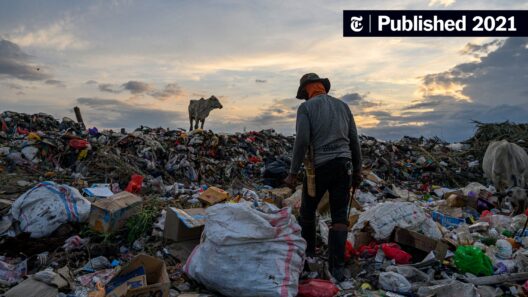In the verdant expanses of mountainous China, the panda, a bear donned in a striking black-and-white coat, wields an allure that captivates millions. However, this charismatic creature, emblematic of wildlife conservation, now resides perilously on the precipice of extinction due to the ravages of climate change. The plight of the panda is a poignant reminder of the fragility of biodiversity and the urgent necessity to confront our warming world.
To understand the challenges faced by pandas, one must first comprehend their natural habitat. The cloud forests of Sichuan province, where these gentile giants frolic, host an intricate tapestry of biodiversity. Towering bamboo groves, saturated in mist, provide the primary dietary sustenance for these bears, constituting over 99% of their consumption. Yet, as the climate fluctuates and temperatures rise, this delicate equilibrium is disrupted. Bamboo, which is critically dependent upon specific climatic conditions, faces an uncertain future, a fate shared by many plant species threatened by increasing temperatures.
The panda’s dependency on bamboo extends beyond mere sustenance; it is the very foundation of its existence. As a unique herbivore, the giant panda has evolved anatomical adaptations that render it finely attuned to the consumption of this specialized diet. With its powerful jaws and prominent molars, the panda can efficiently grind the fibrous stalks of bamboo, yet this adaptation also makes it particularly vulnerable to environmental shifts. As climate change continues to exacerbate habitat degradation, bamboo forests might recede, leaving the pandas to wander through a veritable desert of dwindling resources.
Moreover, the phenomenon known as “bamboo die-off” poses a severe threat. Many bamboo species have synchronized flowering cycles followed by mass die-off. This natural cycle can lead to years without adequate food availability for pandas. When a warming climate amplifies the unpredictability of these cycles, the consequences can be catastrophic. Entire populations may be rendered food scarce, propelling them into conflict over the diminishing resources.
Adding another layer of complexity are the socio-political challenges that intertwine with climate change. Human encroachment into panda habitats due to agricultural expansion and urban development has led to fragmented populations. These isolationary effects not only disrupt breeding but also restrict genetic diversity critical for a resilient population. As the climate shifts, the pandas are forced to migrate in search of food, often finding themselves in hostile territories, increasingly laden with human presence. The tragic irony lies in the fact that while we long to protect these beloved bears, our same actions often catalyze their peril.
The appeal of the panda transcends mere aesthetics; it embodies a tale of resilience and the intrinsic value of preserving biodiversity. These bears are not merely a cultural icon; they serve as an ecological indicator of the health of their environment. Thus, the fight for their survival logically extends to the larger battle against climate change. Conservation efforts aiming to restore panda habitats also aim to protect the myriad of other species that share these ecosystems.
The international community has taken strides to secure the future of the giant panda. Conservation programs involving habitat restoration and anti-poaching initiatives can forge a pathway to recovery. However, such efforts require sustained commitment, financial resources, and international collaboration. Education and awareness are paramount; by influencing public perceptions surrounding climate implications, we can foster deeper connections between humans and the environment, an essential aspect in galvanizing support for panda conservation.
As the world warms, awareness of the interconnectedness of climate change and conservation becomes paramount. The continuing survival of the panda is not an isolated issue but a reflection of broader ecological conversations. Every action we take reverberates through ecosystems. By reducing carbon footprints, implementing sustainable practices, and advocating for stringent environmental protections, we can create ripple effects that might just save the panda from the brink.
In fostering resilience amidst climatic upheaval, technology can serve as a powerful ally. Advanced monitoring systems, satellite imagery, and data analytics allow conservationists to track panda movements and habitat changes. Such innovations enable proactive management, empowering wildlife corridors to ensure that pandas can migrate safely in pursuit of sustenance. Emerging biotechnologies also promise to enrich genetic diversity within panda populations, countering the detrimental impacts of isolation.
Yet, no strategy can substitute for the intrinsic need for a cultural shift towards valuing our natural heritage. The panda, a poignant ambassador of ecological conservation, beckons humanity to acknowledge its intertwined fate with the planet. As stewards of this world, we must transcend our anthropocentric tendencies to advocate for the myriad life forms that coexist with us.
In conclusion, the plight of the panda amid a warming world serves as a microcosm of the broader environmental challenges we face. As we navigate a future laden with uncertainty, let us take inspiration from this gentle creature. Through collective action, innovative strategies, and a profound respect for nature, we can strive towards a sustainable coexistence that honors the inherent value of all wildlife, ensuring that the iconic panda and countless other species flourish for generations to come.








